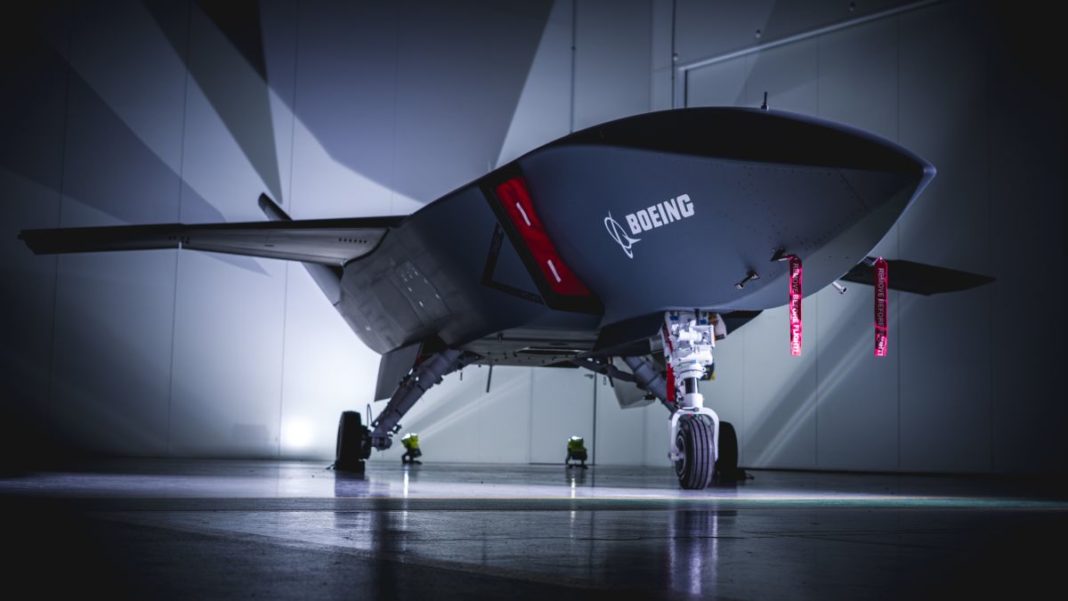Australia has its first “loyal wingman.
“Australian Boeing presented the country’s Air Force on Tuesday with a prototype of a jet-powered drone that they hope will one day fly alongside manned warplanes while bringing artificial intelligence to the battlefield.
The Loyal Wingman, at 38-foot-long (11.5 meters) and with a range of 2,000 miles (3,218.6 kilometers), will “use artificial intelligence to fly independently, or in support of manned aircraft, while maintaining safe distance between other aircraft,” according to Boeing’s website on the project.
The drones will be able to engage in electronic warfare as well as intelligence, reconnaissance and surveillance missions and swap quickly between those roles, according to Boeing.
The aircraft delivered in Sydney on Tuesday is the first of three prototypes Boeing is producing.
It’s also the first aircraft “to be designed, engineered and manufactured in Australia in more than 50 years,” Boeing said in a statement.
Australian Prime Minister Scott Morrison said the drones will protect the country’s pricier combat aircraft like F-35 stealth fighters and their pilots in the future, and drone production will help with a current crisis, fighting the effects of the coronavirus.
“The Loyal Wingman program has helped support around 100 high-tech jobs in Australia. Such projects will be critical to bolster growth and support jobs as the economy recovers from the Covid-19 pandemic,” Morrison said in a statement.The Australian government says it has invested about $40 million into the project.
The Australian government calls the Boeing-RAAF tie-up “a partnership,” but has note provided specifics on actual ownership of the prototypes.
Boeing says the project represents its largest investment in unmanned aircraft outside the United States, though it does not give specific figures, and it touts it as customizable for export as the foundation of its “Airpower Teaming System.”
“We are proud to take this significant step forward with the Royal Australian Air Force and show the potential for smart unmanned teaming to serve as a force multiplier,” said Kristin Robertson, vice president and general manager of Autonomous Systems for Boeing Defense, Space and Security. “We look forward to getting the aircraft into flight testing and proving out the unmanned teaming concept.”
It is expected to fly for the first time later this year, Boeing and RAAF said in a statement.
Boeing first announced plans for the drone at an airshow in Melbourne 15 months ago.
The then-chief of the RAAF, Air Marshal Leo Davies, hinted at how a drone with artificial intelligence would interact with human pilots in an interview with the Australian Strategic Policy Institute.
“We can program it to learn, but it learns linearly, it is not emotional and it is in many respects, in an air combat sense, quite inflexible,” Davies was quoted as saying.
“When we look at a pilot’s ability to assess the situation, that brings with it an amount of emotion and creativity that allows us to be agile.
“We need the flexibility and agility of the human meshed with the speed of a machine. When we put those together, we’ve got a quite amazing outcome,” Davies said.













![Hotstar Premium Cookies 2019 [*100% Working & Daily Updated*] Hotstar Premium Cookies 2019 [*100% Working & Daily Updated*]](https://tahav.com/wp-content/uploads/2019/11/Hotstar-Premium-Cookies-Free-100x70.jpg)



